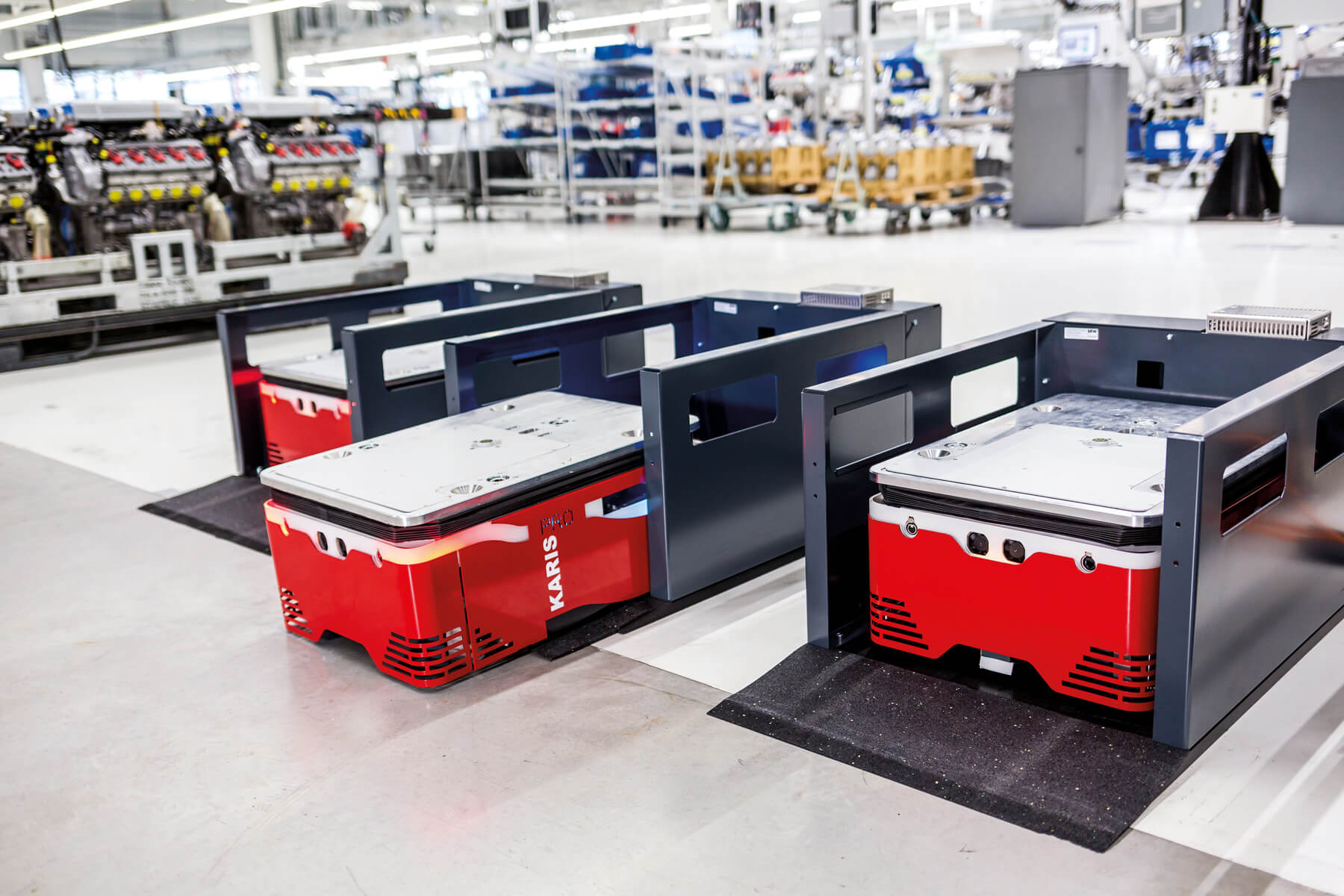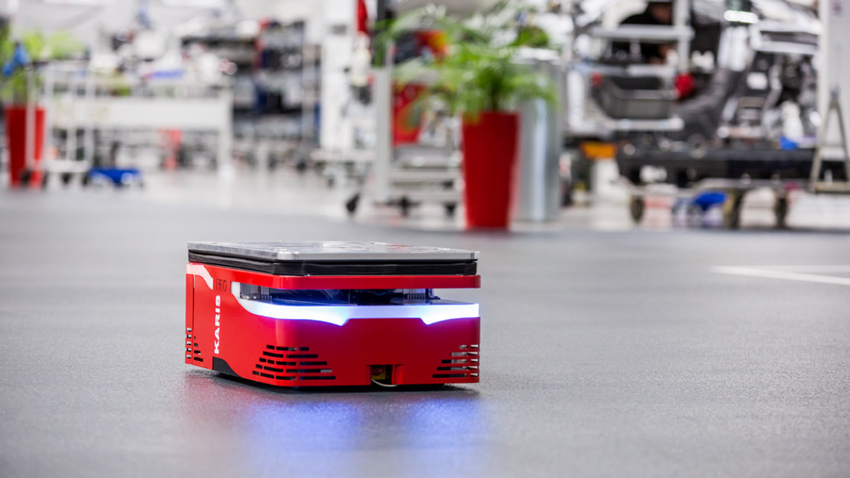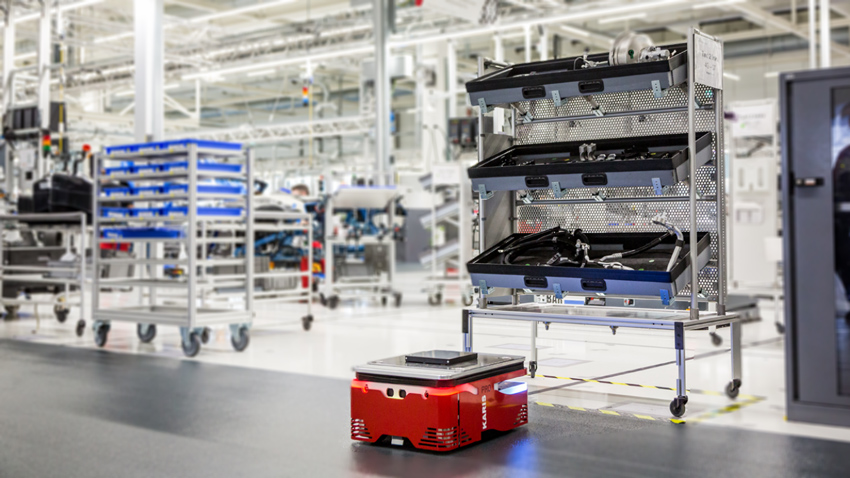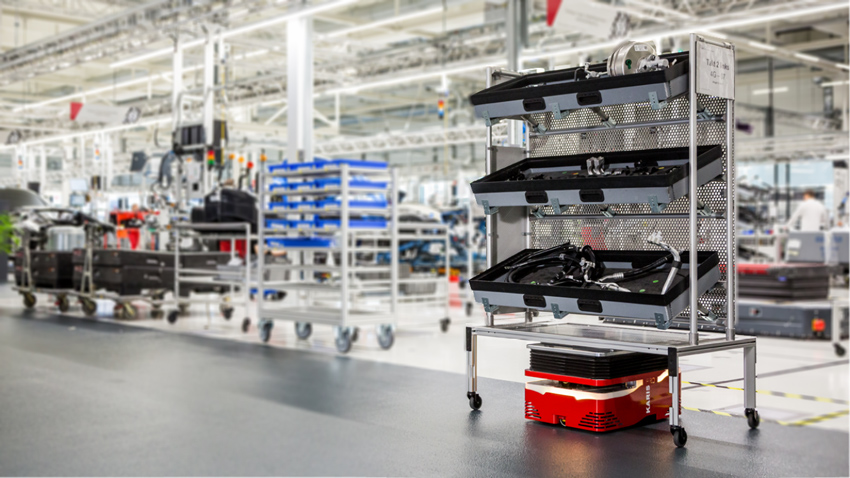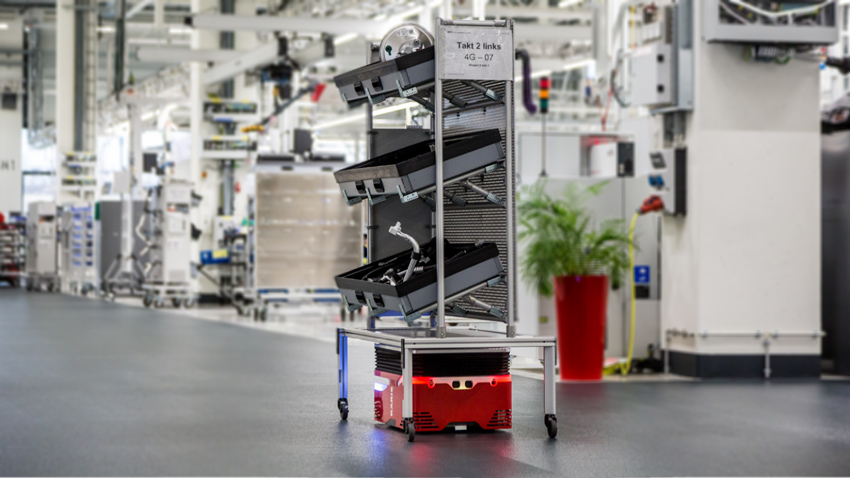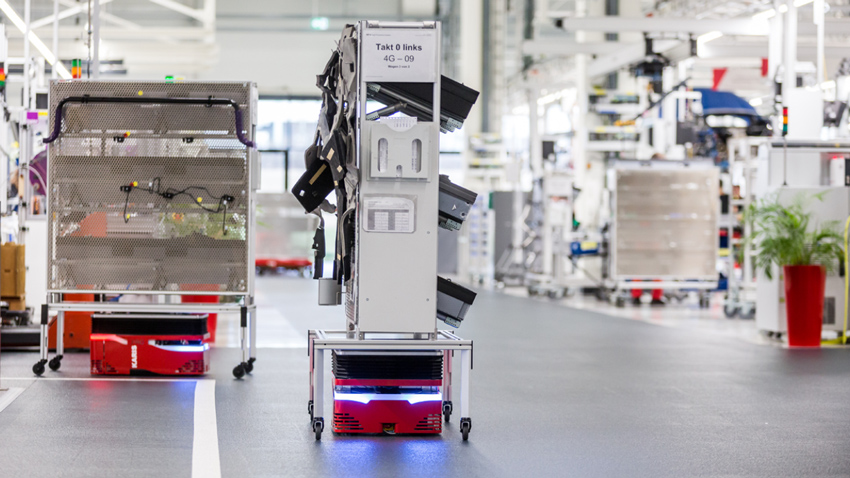October 10, 2017
Harnessing the Swarm
The Karlsruhe Institute of Technology, KIT for short, is world renowned. Here, progress toward Industry 4.0 is at full speed. A network of scientists and technology partners, of which Pepperl+Fuchs is also a member, has now implemented true “swarm intelligence” in production processes with the KARIS PRO project.
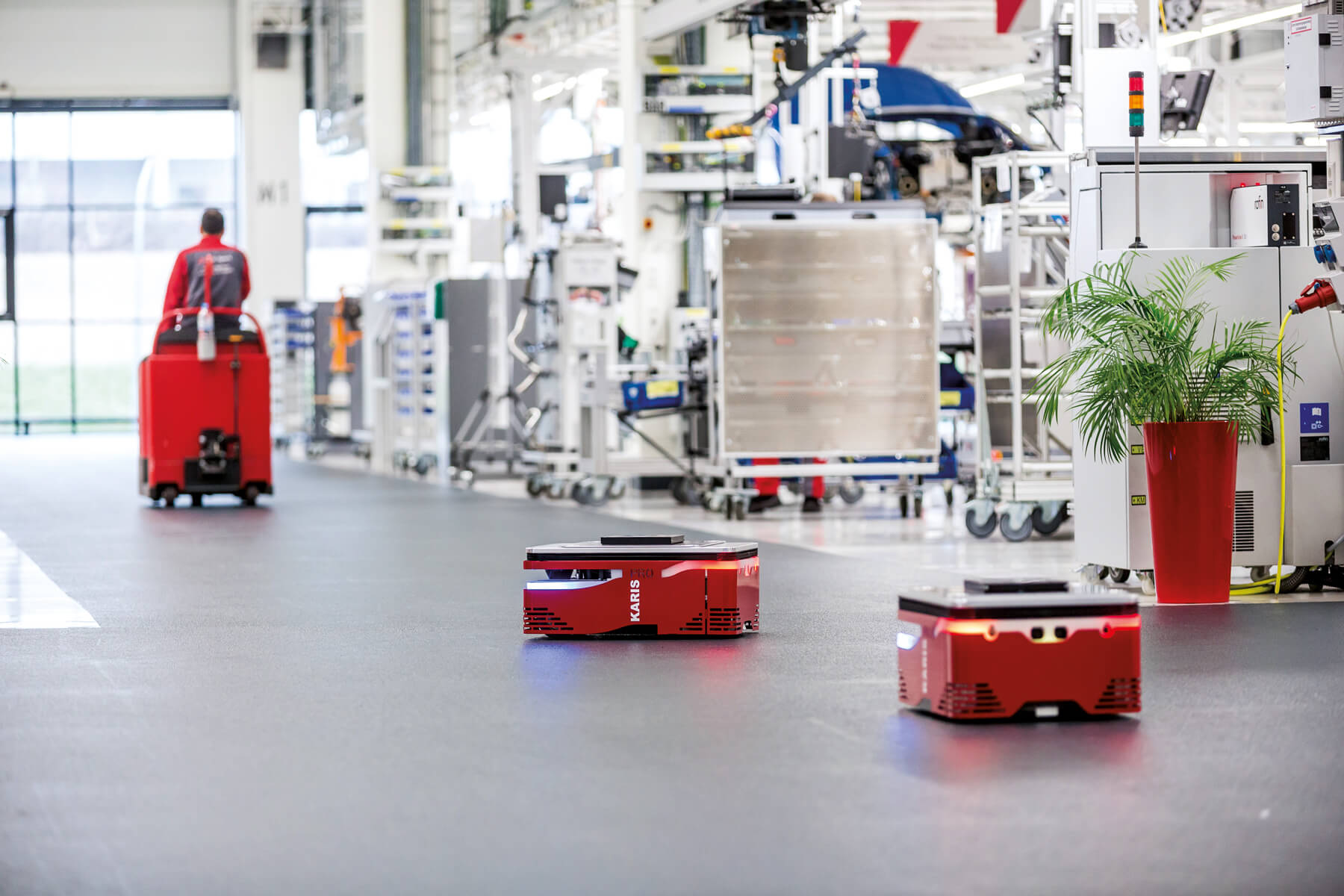
It is a fascinating sight when the swarm starts moving: mobile, cube-shaped conveyor units rush around in the factory like industrious ants, transporting crates of goods or organizing themselves into a team to pick up an entire pallet. Sometimes they work together in a row like a large roller conveyor to move items, only to come together to form a new shape a little later when there´s a new order. The best part: the system handles this independently without the need for a central control panel.
Orders are made available via an ERP system, and the independent conveyor units “negotiate” with each other via WLAN about which unit will do what, based on various parameters. Which units are currently available? Which units have the shortest path to the transport goods? Which units have enough battery power? “What we have created here is a real cyber-physical production system that breaks with the conventional notion of rigid processes and is much more efficient,” says Andreas Trenkle, Project Manager for KARIS PRO at KIT.
The Sum of the Parts
This has been made possible thanks to the expertise available at the Institute for Material Handling and Logistics, as well as advice and components from well-known automation companies. They formed a partnership with Trenkle, and his colleagues and supported the researchers diligently. This included Pepperl+Fuchs, represented by Team Leader R&D Identification Systems Dieter Schneider and his team. Trenkle explains: “The specialist knowledge of numerous experts has been brought together for the KARIS PRO project. A laser scanner detects the surroundings, a special drive stops the vehicle in the event of possible collisions, and the tailor-made chassis ensures maximum flexibility when twisting and turning in a confined space, to name just a few of the installed components.” What is the role of RFID in this project? “RFID is a key technology for the intrinsic intelligence of KARIS PRO as it passes on information about the goods to the conveyor units. After all, they need to know what they are moving and where,” Schneider points out.
From Standard to Custom-Made
The task for him and his team was to reliably measure all of the standard dimensions of the boxes. It also had to be taken into consideration that the RFID tags can be installed either on the bottom or on the side of boxes, allowing the production staff to reach them more easily. “The fact that we had to install the RFID read/write head in a specified position directly next to a large number of other electrical components was technically very demanding throughout the project. At the same time, reaching the required output power was a tough nut to crack,” says Schneider. This meant that the RFID experts from Pepperl+Fuchs had to dig deep into their bag of tricks: “We modified one of our IQH1-type read/write heads so that it has three spatially arranged coils. The capacitors can be switched on or off independently of each other. This does not interfere with the resonant circuits of the coils, as the reader adjusts itself to the environment automatically. This means we are in the position to detect the tags reliably and at various points in the box.”
Both Sides Benefit
By adapting the system and combining individual automation components, a complete solution was created step by step that connects the present to the future. Trenkle provides an insight into the current status: “KARIS PRO is already in pilot deployment in large automotive companies. Universal use of the system can be transferred to other areas outside of industrial production in the same way.”
Dieter Schneider assesses the successful cooperation as a gain for both sides: “We were able to support KIT's practical research with our solution. Being that we are a sensor manufacturer, the findings of this project regarding swarm intelligence are, of course, extremely interesting for Pepperl+Fuchs. After all, we are in the process of actively defining what the manufacturing of tomorrow will look like.”

